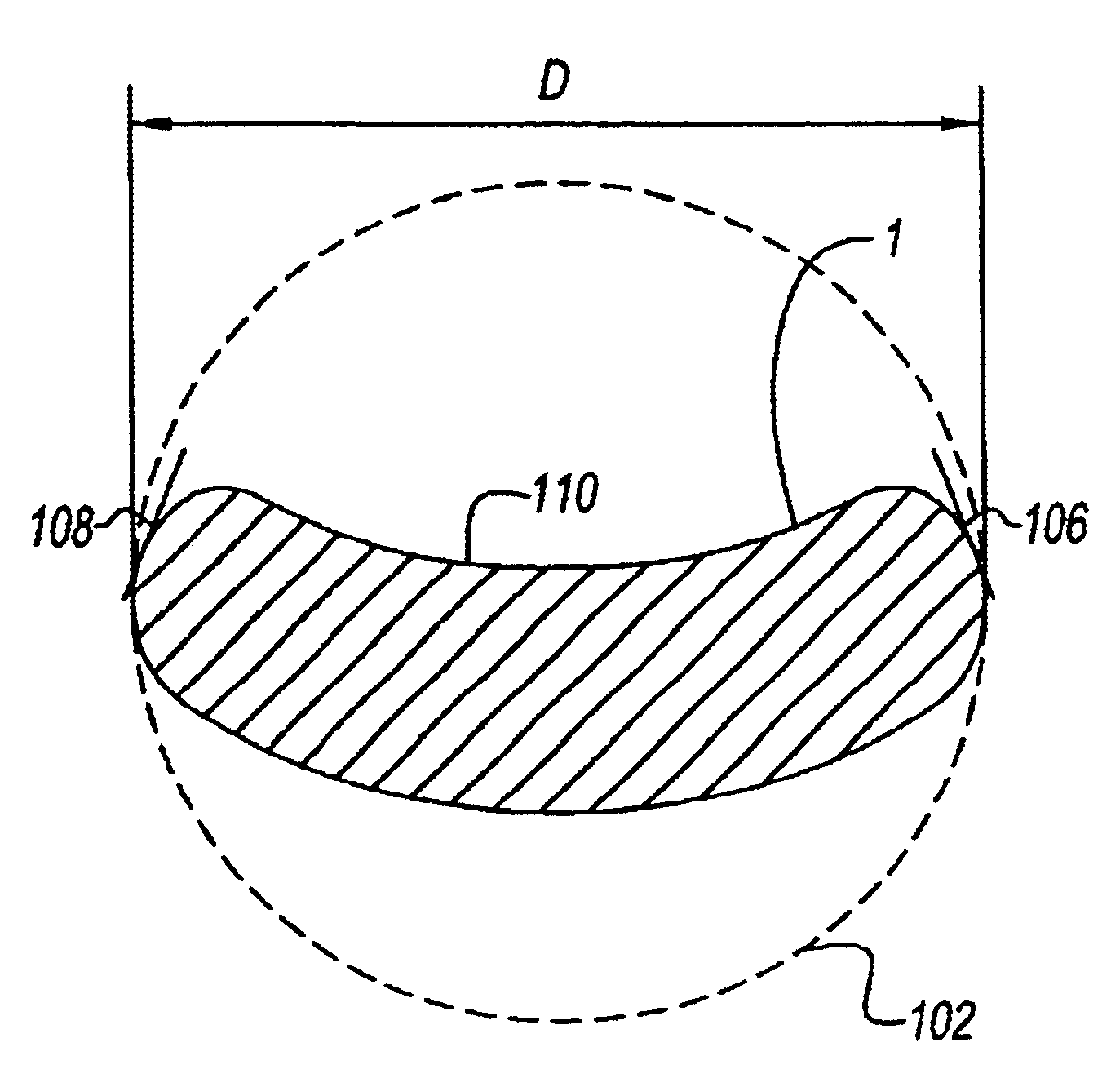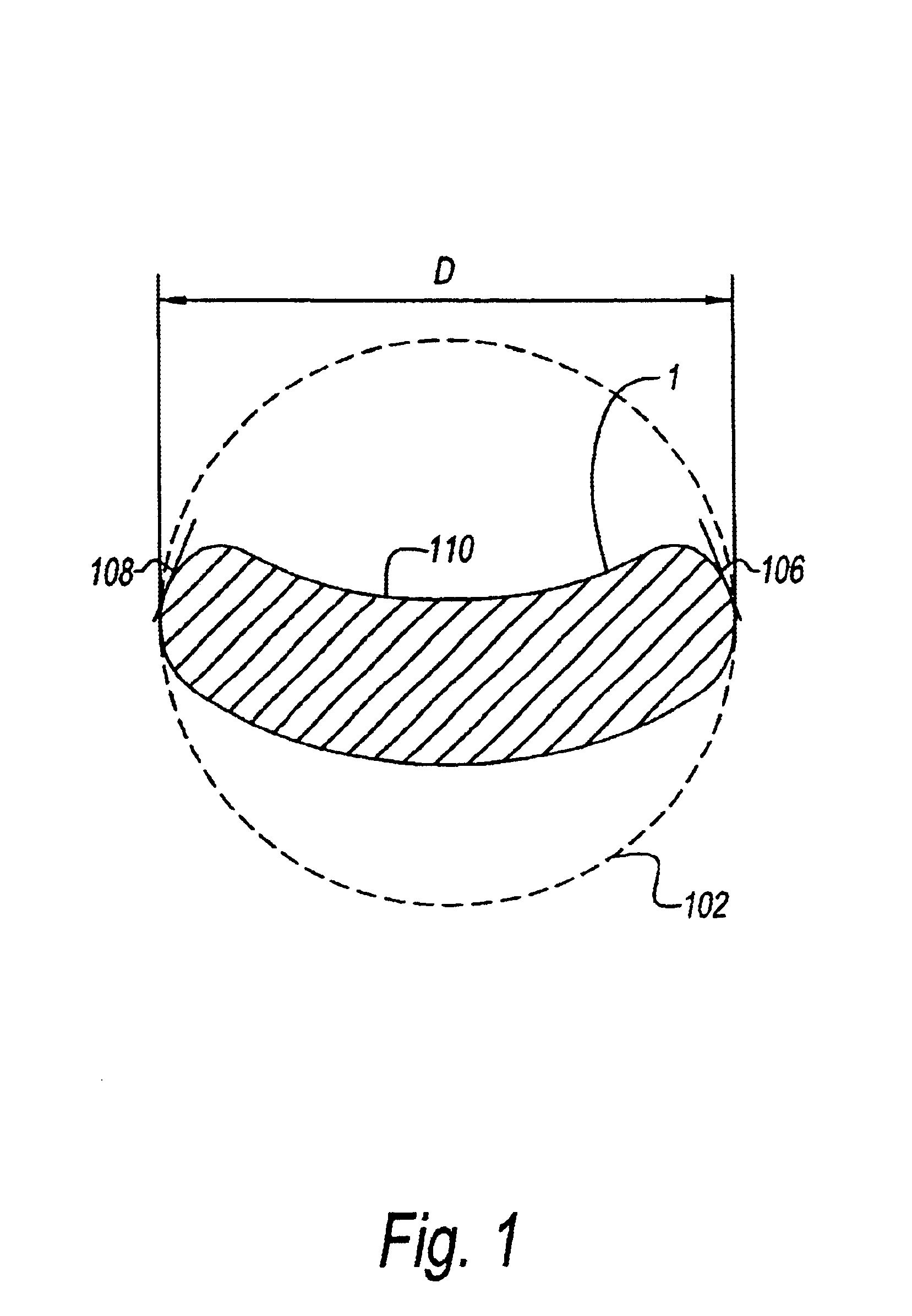6-mirror projection objective with few lenses
a technology of projection objective and few lenses, applied in the field of projection objective, can solve the problems of inconvenient mounting and alignment, inconvenient production and inability to meet the requirements of the application, and achieve the effect of substantially improving the production efficiency of refractive optical elements
- Summary
- Abstract
- Description
- Claims
- Application Information
AI Technical Summary
Benefits of technology
Problems solved by technology
Method used
Image
Examples
Embodiment Construction
[0027]FIG. 1 illustrates what is meant in the present application by the off axis segment and the diameter of the off axis segment.
[0028]FIG. 1 by way of example shows a kidney-shaped field for a kidney-shaped illuminated field 1 on a reflective or refractive element of the projection objective. Such a shape for the off axis segment is expected when using the objective according to the invention in a microlithography projection exposure apparatus when the object plane is illuminated with a segment of an annular field. The circular envelope 102 fully encloses the kidney shape and coincides at two points 106, 108, with the edge 110 of the kidney shape. The circular envelope is always the smallest circle that encloses the off axis segment. The diameter D of the off axis segment is then found from the diameter of the circular envelope 102.
[0029]FIG. 2 illustrates the object field 111 of a projection exposure apparatus in the object plane of the projection objective that is imaged using ...
PUM
 Login to View More
Login to View More Abstract
Description
Claims
Application Information
 Login to View More
Login to View More - R&D
- Intellectual Property
- Life Sciences
- Materials
- Tech Scout
- Unparalleled Data Quality
- Higher Quality Content
- 60% Fewer Hallucinations
Browse by: Latest US Patents, China's latest patents, Technical Efficacy Thesaurus, Application Domain, Technology Topic, Popular Technical Reports.
© 2025 PatSnap. All rights reserved.Legal|Privacy policy|Modern Slavery Act Transparency Statement|Sitemap|About US| Contact US: help@patsnap.com



